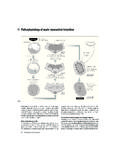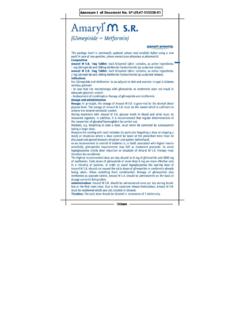Transcription of Acid-Base Disorders - Columbia Nephrology
1 1 Acid-Base DisordersJai Radhakrishnan, MD, MS2 Diagnostic Considerations Data points required:{ABG: pH, pCO2, HCO3{Chem-7 panel: anion gap Step 1: Acidemia/alkalemia (Primary disorder) Step 2: Compensation Step 3: Anion gap / delta AG-delta HCO33 Step 1: Primary Disorder Alkalemia Metabolic alkalosis ( high HCO3 ) Respiratory alkalosis ( low pCO2 ) Acidemia Metabolic acidosis ( low HCO3 ) Respiratory acidosis ( high PCO2 ) 2: CompensationLIMITSLIMITS Met. alkalosisPCO2<55 Resp. alkalosisHCO3>12 Resp. acidosisHCO3<45 Met. acidosisPCO2>10 mmHgAcute/Chronic phase only with respiratory , or, more pain and suffering Metabolic acidosis {Change in PaCO2 = x change in HCO3- Metabolic alkalosis {Change in PaCO2 = x change in HCO3 acute respiratory acidosis {Change in HCO3- = x change in PaCO2 Chronic respiratory acidosis {Change in HCO3- = x change in PaCO2 acute respiratory alkalosis {Change in HCO3- = x change in PaCO2 Chronic respiratory alkalosis {Change in HCO3- = x change in PaCO2 *A positive or negative change represents an increase or decrease, respectively, from the normal value of 40 mm Hg for PaCO2 or 24 mEq/L for HCO3.}}}}}}}}
2 67 Step 3: Anion Gap Na+- (HCO3-+Cl-) Normal: ~12 Albumincontributes 2-4 to the A narrow or positive AGimplies excessive unmeasured cations (light chains) >20implies the presence of a wide anion-gap metabolic acidosisUnmeasured anions-unmeasured cations8 Delta-Delta Relationships in Metabolic Acidosis0510152025AG Met acid +MetAlkAG Met acid + NAGMet AcidAGHCO39 Make your ABG diagnoses pH , PaCO250 mm Hg, HCO3-23 mEq/L{ acute Respiratory Acidosis pH , PaCO233 mm Hg, HCO3-25 mEq/L{ acute primary respiratory alkalosis, with metabolic alkalosis pH , PaCO238 mm Hg, HCO3-14 mEq/L (AG=25){Primary Metabolic Acidosis (+gap), with respiratory acidosis10 Watch that delta! An 80 year male patient with osteoarthritis was found comatose: Physical exam: ecchymoses + Labs: 140|105|20 Glucose=80 Ketones=1+ |15 | (RA)= Step 1: Acidemia/alkalemia(Primary disorder) Step 2: Compensation Step 3: Anion gap Differential Diagnoses{Sepsis{Salicylate{Cirrhosis11 Watch that Delta, Delta!A 25 year old type 1 diabetic is admitted in shock.}}}}}}
3 After fluid resuscitation, the following labs are drawn:ABG: (RA)Chem 7: 125| 80|20 Glucose=875 Ketones=3+ | 20| Step 1: Acidemia/alkalemia(Primary disorder) Step 2: Compensation Step 3: Anion gap12 Watch that Delta, Delta, ACIDOSISNORMAL ANION GAP (HCL) Renal HCO3 loss GI HCO3 loss HCl consumption{TPNWIDE ANION GAP (OTHER ACIDS) Lactic acid Ketoacids Sulfuric acid (Renal failure) Ingestions{Methanol{Ethylene glycol14 Case: Would you use HCO3 ?A 50 year old male s/p AMI is in code status and CPR is being you administer NaHCO3?15 The Bicarbonate ControversyDisadvantages of treating acute metabolic acidosis Intracellular lactate production Paradoxical intracellular acidosis Left shift of O2dissociation curve Na loadTreat when pH< of treatingCHRONIC metabolic acidosis{Negative nitrogen balance{Growth retardation{Progression of renal disease16 Bicarbonate deficit Deficit/ liter Volume of distribution(1/2 body weight) Amount of NaHCO3=deficit x to increase serum bicarbonate from 2 to 12 meq/liter in a 70 kg male:Deficit=10 Vd=35 Amount=350meq ~7 amps17Is this RTA?}}}}}}
4 NORMAL ANION GAP (HCL) Renal HCO3 loss{Proximal{Distal{Hyporenin/Hypo aldo GI HCO3 loss HCl consumption{TPN18 History and Physical A 38-year-old woman was admitted with severe weakness (3rdepisode) PMH: artificial tears for dry eyes Laboratory{sodium 141 mEq/L{potassium mEq/L{carbon dioxide 14 mEq/L{chloride 114 mEq/L{BUN/creatinine 14 mg/dL ( mmol/L)/ mg/dL ( mol/L){Albumin Intern ;164:905-909 19 ABG pH PCO223 mm Hg PO2100 mmHg sodium 141 mEq/L potassium mEq/L carbon dioxide 14 mEq/L chloride 114 mEq/L AG 13 BUN/creatinine 14 mg/dL ( mmol/L)/ mg/dL ( mol/L) Albumin of BicarbonateJ Am Soc Nephrol 13:2160-2170, 2002 21 Acidification of UrineJ Am Soc Nephrol 13:2160-2170, 2002 22 The Role of AldosteroneCapillaryUrineK channelNa channelNa-K ATPaseProton PumpAldo RAldosterone Reabsorption of Na, Cl, HCO3 Loss of Proton and KNa+K+H+ +Na+Na+K+K+Medullary Collecting Tubule23 Total Body K+ Excess Decreases Proximal Tubule Acidification and Ammoniagenesisvia Intracellular Alkalosis2.}}}}}}}}}}
5 Total body K+ excessK+3. K+ entryinto proximal tubule cellsHCO3-(1) Na+(3) HCO3-H+CO2H2O+H+Na+H+4. Alkalinization of prox tubule cellby K+/H+exchange1. Failed CCD K+secretion24 Urine pHPlasma [HCO3-] mMNormalProximalRTAD istal RTA(Oxford Textbook of Nephrology - Soriano et al, 1967)Urine pH Urine pH bicarbonate in Plasma bicarbonate in RTARTA25 Urinary Anion Gap Urine (Na+K) Cl Proton is partially excreted as NH4 (unmeasured cation) The gap is usually Zero or Negative In dRTA the anion gap will remain zero or positive In other acidoses, the gap will become more anions-unmeasured cations26 Urine Urine pH Urinary anion gap +427J Am Soc Nephrol 13:2160-2170, 2002 28 Nephrocalcinosis29 Schirmer s test positive + antibodies to the Ro/SSA and La/SSB Cryocrit + DIAGNOSIS: {Sjogren s syndrome with distal RTA30 Comparison of Normal Anion-Gap AcidosesFindingType 1 RTAType 2 RTAType 4 RTAGI Bicarbonate LossNormal anion-gap acidosisYesYesYesYesMinimum urine pH> < < to 6% Filtered bicarbonate excreted<10>15<10<10 Serum potassiumLowLow HighLowFanconi syndromeNoYesNoNoStones/nephrocalcinosisYesNoNoNoLowNormalLowHighUrine anion gapPositiveNegativePositiveNegativeDaily bicarbonate replacement needs<4 mmol/kg>4 mmol/kg <4 mmol/kgVariable31 Case27 year old alcoholic admitted with altered mental exam: Mild hypovolumiaLabs: ABG= (RA)Chem 7: 116|66|56 = |15| weak +, glucose=100 Lactate= Osm=156 MeasuredOsm= 35032 Osmolar Gap (Hyperosmolar Hyponatremia) Calculated osmolality= (2Na+ + Gluc/18) Measured osmolality=(lab) OSMOLAR GAP.}
6 {(measured -calculated){<10 INCREASED OSMOLAR GAP with ACIDOSIS{Methanol{Ethylene glycol{Renal failure{Ketoacidosis Without Acidosis{Ethanol, isopropyl alcohol{TURP (glycine){Mannitol33 METABOLIC ALKALOSIS34 Metabolic Alkalosis-PathogenesisStep 1:GENERATION Vomiting Renal loss Diuretics Aldosterone Addition of HCO3 Post-CPR Multi transfusionCl-HCO3Cl-H+Cl-35 Step 2: MAINTENANCE(prevention of kidneys getting rid of HCO3) Decrease GFR Aldosterone HypokalemiaMetabolic Alkalosis-Pathogenesis36 Distal TubuleCapillaryUrineK channelNa channelNa-K ATPaseProton PumpAldo RAldosterone Reabsorption of Na, Cl, HCO3 Loss of Proton and of Metabolic Alkalosis by Treatment SALINE RESPONSIVE{Volume depletion SALINE RESISTANT{Primary hyperaldosteronism{Effective volume depletion Cirrhosis/ascites COPD/RHF38 Treatment of Saline-Resistant Metabolic Alkalosis Spironolactone Acetazolamide HCl IV39 Metabolic Alkalosis:Case 1A 60 year old woman with Hep-C cirrhosis is admitted with varicealbleed. After being rapidly transfused 8 U PRBC, she is taken to the OR.}}}}}}}}}}}}
7 Post op begins to would you treat her alkalosis?40 A 30 year old woman with peptic ulcer disease is admitted with severe protracted vomiting. Exam: BP 90/50, poor skin turgor Labs: 123|80| | 35| What is the mechanism of her metabolic alkalosis? What do you expect the urine pH to be? How would you treat her?Metabolic Alkalosis:Case 2












